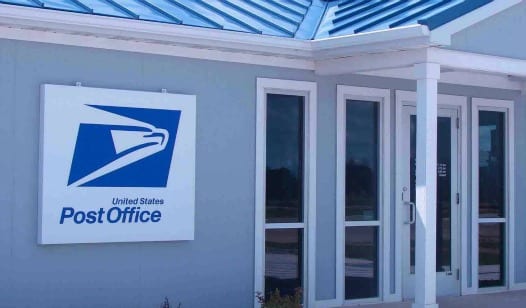America’s never-ending ping-pong match with the United States Postal Service – I love it! I hate it! Close it down! No, keep it open! – is back on.
The announcement that the Postal Service will discontinue Saturday service on Aug. 1 has re-started the slugging match over what has to be America’s favorite – and least favorite – government service.
Or is it a quasi-government service?
That’s the real problem with the U.S. Postal Service. We don’t really know them, even though most of us think we do.
We think, for example, they are an official agency of the U.S. government. They’re not.
We think that the net loss of $15.9 billion in 2012, the trigger point for removing Saturday service, has to be covered by U.S. taxpayers. It does not.
We think that email, Facebook and Twitter have made it unnecessary and unprofitable to even have a postal service. Not so. It is necessary, and it could be profitable.
And so the debate goes on: We flip-flop on the pros and cons of its real value in today’s economy and society … and we just can’t decide which side to take.
So, here are some facts you should be aware of before choosing a side.
Are They? Or Aren’t They?
The USPS is not a government agency. Well, not really.
After a postal workers strike in 1970, President Richard Nixon abolished the U.S. Post Office Department as part of his Cabinet and created the U.S. Postal Service. It’s an independent agency with a monopoly on delivering mail, but not a monopoly on delivering packages. That’s how we got UPS and FedEx into the game.
The real issue is that the USPS is not so independent that it can decide how to run its own business. It first has to ask Congress for permission to do anything major like hike the price of stamps or close down under-used facilities or even provide some other services, like banking or printing or selling sweaters, that would make visiting a post office worthwhile.
That becomes a real issue when you want to do things a profitable business would do when it’s $15.9 billion in the red. The Postal Service did a study last year that found if Congress would get out of the way and let it make significant changes, it could reduce costs $20 billion by 2015.
Those changes could include closing inefficient facilities and moving others to high-traffic areas like malls; reducing health care costs significantly; delivering mail just three days a week in remote rural areas; using innovative marketing techniques to allow advertising on its trucks, buildings and mailboxes; and … well, lots of stuff that real businesses do when they’re bleeding financially.
All of that, however, would require the approval of Congress, and history says that ain’t happening!
In 2009, for example, the USPS attempted to close 3,200 facilities in a cost-saving measure. Lawmakers started fuming and whining over the fact they were going to lose one or two barely used post offices in their districts. By the time they finished wiping their tears, only 162 facilities were closed. That’s about a 5 percent success ratio. Not much savings there.
USPS Profitable in 2006
It also was Congress that passed the Postal Accountability and Enhancement Act in 2006, requiring USPS to make $5 billion annual payments from 2007 through 2016 to build up the service’s retirement fund. The USPS made the first three, but with revenues dwindling because people don’t mail much anymore, they missed the last three. That’s how you build a $15.9 billion deficit.
By the way, the Postal Service had a surplus of $1 billion in 2006, the year before it had to start making $5 billion payments to the retirement fund. That was its last year of profitability.
And then there is the matter of “universal service,” which means every home and every business in America must be served by the USPS, no matter how remote their location. UPS and FedEx know that it’s a money-loser delivering to isolated places like Nobleton, Fla. (pop. 205) or Fort Peck, Mont. (pop. 215). If they get something addressed to secluded places like that, they put it into a mailbox and let USPS deliver it.
There is also the matter of the cost for a first-class stamp. We scream every time they raise it a penny, but it’s still nowhere near what they charge in other countries. It’s up to 46 cents now, but most European and Asian countries charge $1 or more to drop off a letter. That means you can ship a letter across the country — Maine to California, a distance of 3,143 miles – for less than half what it costs to send the same letter from one end of England to the other, a distance of about 430 miles.
On the down side, there has been a significant drop in mail delivered. It has plunged from a high of 213 billion pieces in 2006 to 168 billion in 2012. The slide is going to continue for the foreseeable future, and unless the Internet shuts down tomorrow, it’s never going to improve.
Still, a 2011 study ranked the U.S. Postal Service No. 1 among the 20 largest countries in the world. Generally speaking, it does a pretty good job getting most of the 168 billion pieces of mail stuffed into a box, and not many people really are going to miss Saturday service.
Except the clowns in Congress, who must officially approve this before it can actually happen.
So, whose side are you on now?








